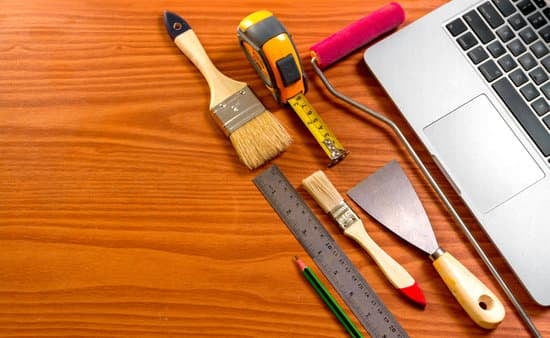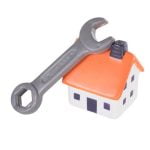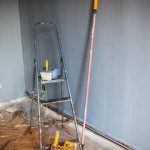Getting a high appraisal for your home is crucial when it comes to selling or refinancing. A higher appraisal value means more equity and better loan terms, making it a top priority for homeowners. In this article, we will explore various strategies and tips on how to improve the appraisal of your home.
Understanding the factors that determine your home’s value is the first step towards achieving a high appraisal. We will discuss the appraisal process in detail, including the key considerations appraisers take into account when evaluating a property. By gaining insights into this process, you can make informed decisions on how to enhance your home’s value.
Boosting curb appeal is essential as it sets the first impression for potential buyers or appraisers. We will provide expert advice on how to enhance the exterior of your home, from landscaping and maintenance to small upgrades that can make a big impact. Additionally, we will delve into tips for preparing the interior of your home for appraisal, focusing on creating a favorable atmosphere that showcases its best features.
Investing in upgrades and renovations can significantly increase your home’s appraisal value. We will guide you through different improvement projects that yield the highest returns and discuss cost-effective options that can improve both aesthetics and functionality. Furthermore, we will emphasize the importance of highlighting unique features during an appraisal to differentiate your property from others in similar markets.
Understanding the Appraisal Process
When it comes to improving the appraisal of your home, it is essential to understand the appraisal process and the factors that determine your home’s value. This knowledge will enable you to make informed decisions and take appropriate actions to increase the appraisal value of your property.
The Role of Comparable Sales
One crucial factor in determining your home’s value during the appraisal process is comparable sales, also known as “comps.” Appraisers look at recent sales of similar properties in your neighborhood to assess the market value of your home. Therefore, it is important to research and provide the appraiser with information on any recent sales or listings that are similar to your property.
To find accurate comps, consider working with a real estate agent who has access to comprehensive databases and can provide you with a list of recent sales in your area. Ensure that the properties being compared are similar in terms of size, condition, age, and amenities. By having solid evidence of recent sales prices for comparable properties, you can demonstrate why your home should be appraised at a higher value.
The Impact of Location
Location plays a critical role in determining the value of a property. Factors such as proximity to schools, shopping centers, parks, and transportation options can significantly impact your home’s appraisal value. Additionally, factors like crime rate, desirability of the neighborhood, and future development plans can also influence an appraiser’s assessment.
While you cannot change the location of your home itself, you can highlight positive aspects about your neighborhood during the appraisal process. For example, if there are upcoming infrastructure projects or improvements planned in your area that could enhance its desirability and market value, ensure that this information is shared with the appraiser.
Assessing Condition and Quality
During an appraisal, an appraiser will evaluate the overall condition and quality of your home. This includes factors such as the age of the property, any updates or renovations that have been made, and the general state of maintenance. Ensuring that your property is well-maintained and in good condition can positively influence its appraisal value.
To enhance the condition and quality assessment, it is important to repair any visible damages such as cracked tiles, leaky faucets, or broken light fixtures. Cleaning your home thoroughly and making sure all appliances are in working order will also help create a favorable impression on the appraiser. Providing documentation of recent maintenance work or upgrades can further support your case for a higher appraisal value.
Understanding these factors that determine your home’s value during the appraisal process can help you strategize and make targeted improvements to increase its appraisal value. By focusing on comparable sales, highlighting your location’s advantages, and ensuring the overall condition and quality of your home are at their best, you can enhance your chances of a higher appraisal value.
Boosting Curb Appeal
Boosting curb appeal is an essential step in improving the appraisal of your home. When an appraiser evaluates a property, the first impression plays a significant role in determining its value. The exterior of your home sets the tone for the entire appraisal process, so it’s crucial to make sure it leaves a positive and lasting impact.
One way to enhance curb appeal is by focusing on landscaping and maintenance. A well-maintained lawn, trimmed hedges, and colorful flowers can instantly make your home more visually appealing. It’s also important to ensure that the exterior of your home is clean and free from any debris or clutter. Power washing the siding, driveway, and walkways can go a long way in giving your home a fresh look.
Another aspect to consider when boosting curb appeal is the condition of your front door and windows. A fresh coat of paint or varnish can instantly revitalize them and create a welcoming entrance. Adding attractive hardware, such as a new doorknob or stylish house numbers, can also make a difference.
To further enhance the first impression of your home, consider addressing any necessary repairs or updates. Fixing cracked sidewalks or driveways, replacing broken lights or fixtures, and repairing damaged gutters are all small but impactful ways to improve curb appeal.
In summary, enhancing curb appeal is vital for improving the appraisal value of your home. By focusing on landscaping and maintenance, attending to the condition of your front door and windows, and making necessary repairs or updates, you can create a positive first impression that will contribute to higher appraisal values.
| Tip | Description |
|---|---|
| Landscaping | A well-maintained lawn with trimmed hedges and colorful flowers. |
| Clean Exterior | Power washing the siding, driveway, and walkways to give your home a fresh look. |
| Fresh Front Door and Windows | A new coat of paint or varnish and updating with stylish hardware. |
| Address Repairs and Updates | Fixing cracked sidewalks or driveways, replacing broken lights or fixtures, and repairing damaged gutters. |
Enhancing Interior Spaces
When it comes to appraising your home, the interior plays a crucial role in influencing its value. Potential buyers and appraisers take into account the condition, functionality, and aesthetics of your home’s interior spaces. Therefore, it is important to focus on enhancing these areas to maximize your home appraisal value.
One effective way to prepare the inside of your home for an appraisal is by decluttering and depersonalizing the spaces. Clearing out unnecessary items and personal belongings not only creates a clean and spacious look but also allows appraisers to better evaluate the size and layout of each room. Additionally, removing personal items such as photographs and personalized decor allows potential buyers to envision themselves living in the space more easily.
Another aspect to consider is the overall condition of your home’s interior. It is essential to ensure that all rooms are well-maintained and free from any noticeable damage or wear. Repair any visible cracks or holes in walls, fix leaky faucets or pipes, replace broken light fixtures, and address any other maintenance issues. These small repairs can make a big difference in improving both the aesthetic appeal and functionality of your home.
Furthermore, staging your home can greatly impact its appraisal value by showcasing its potential. You can do this by strategically arranging furniture, incorporating neutral colors for walls or furnishings, and maximizing natural light. By creating an inviting atmosphere through proper staging techniques, you can help appraisers see the full potential of each space.
| Tips for Enhancing Interior Spaces: |
|---|
| – Declutter and depersonalize |
| – Ensure overall good condition |
| – Stage the home for maximum appeal |
Upgrades and Renovations
When it comes to improving the appraisal value of your home, investing in upgrades and renovations can have a significant impact. By making strategic improvements, you can not only increase the overall value of your property but also make it more appealing to potential buyers. Here are some key tips for investing in home improvements that can boost your home’s appraisal value.
First and foremost, it’s important to focus on upgrades that have a high return on investment (ROI). This means choosing renovations that will increase the value of your home by a greater amount than what you spend on them.
Some examples of high ROI upgrades include kitchen remodels, bathroom renovations, and adding additional living space such as finishing a basement or attic. These types of upgrades are often highly sought after by buyers and can significantly increase your home’s value.
Another important consideration when planning upgrades and renovations is to prioritize projects that are likely to appeal to a wide range of buyers. Opting for neutral color schemes, classic designs, and durable materials will ensure that your improvements have broad appeal.
It’s also worth considering popular features that are currently in demand, such as energy-efficient appliances or smart home technology. By incorporating these elements into your renovations, you can attract modern buyers who are willing to pay a premium for these features.
Finally, it’s important to ensure that any upgrades or renovations are done professionally and with proper permits if required. Poor craftsmanship or unpermitted work can actually decrease your home’s appraisal value. Hiring qualified contractors or professionals for the job will not only provide you with quality workmanship but also give appraisers confidence in the value of your property.
Investing in strategic upgrades and renovations is an effective way to improve the appraisal value of your home. By focusing on high ROI projects, appealing to a broad range of buyers, and ensuring professional workmanship, you can make sure that your improvements have a significant impact on your home’s appraisal value.
| Upgrade and Renovation | Average Cost | ROI |
|---|---|---|
| Kitchen Remodel | $25,000 – $50,000 | 70% – 80% |
| Bathroom Renovation | $10,000 – $20,000 | 60% – 70% |
| Adding Additional Living Space (e.g., finishing a basement or attic) | $20,000 – $40,000 | 50% – 60% |
Highlighting Unique Features
Highlighting the unique features of your home is crucial when it comes to showcasing its key selling points and ultimately increasing its appraisal value. By drawing attention to the distinctive aspects of your property, you can make it stand out from other homes in the market and leave a lasting impression on appraisers. Here are some strategies to effectively highlight unique features:
Identify and Emphasize Standout Features
Take a close look at your home and identify any standout features that make it special and appealing. It could be a stunning view, architectural details, a fireplace, or an upgraded kitchen. Once you’ve pinpointed these features, emphasize them during the appraisal process by directing the appraiser’s attention towards them. Provide information about their value and significant advantages they bring to the property.
Use Visual Displays
Utilize visual displays to effectively showcase your home’s unique features during the appraisal. This can include before-and-after photos for renovations or upgrades, virtual tours or videos highlighting specific areas of interest, or professional staging to draw attention to particular rooms or elements. These visual aids can help appraisers visualize how your home stands out among others in terms of its key selling points.
Gather Documentation and Supporting Information
Compile documentation and supporting information that highlights the unique features of your home. This may include original architectural plans if you have made modifications, records of any recent upgrades or renovations, energy efficiency certifications, original blueprints for custom-built features like fireplaces or cabinetry, and any other relevant documents that demonstrate their value and quality. Providing this information to appraisers helps them better understand the significance of these unique features when evaluating your home.
By effectively showcasing your home’s key selling points through highlighting unique features, you can significantly influence the appraisal process and increase its overall value. Identifying standout aspects of your property, utilizing visual displays, and providing appraisers with supporting documentation are all effective strategies to demonstrate the special qualities of your home. Remember, emphasizing these features can make a lasting impression on appraisers and potentially lead to a higher appraisal value for your property.
Fresh Paint and Finishing Touches
When it comes to improving the appraisal of your home, fresh paint and finishing touches can make a significant difference. These simple updates not only enhance the overall look and feel of your property but also add value to it. Here are some tips on how you can use fresh paint and finishing touches to improve your home’s appraisal value.
Selecting the Right Colors
Choosing the right colors for your home is crucial when it comes to increasing its appraisal value. Opting for neutral shades such as whites, grays, and beiges can appeal to a wider range of buyers and create a sense of spaciousness and cleanliness. These colors also help potential buyers envision their own furniture and decor in the space, making it more appealing.
Paying Attention to Details
In addition to fresh paint, paying attention to small details can make a big impact on your home’s appraisal value. Replace worn-out switch plates, outlet covers, doorknobs, and cabinet hardware with new ones that are modern and in good condition. Repair any visible cracks or dents in walls or ceilings before painting them. These minor improvements may seem insignificant individually but collectively contribute to creating an overall polished look.
Adding Finishing Touches
Once you have painted the interior walls, consider adding some finishing touches that can elevate your home’s appeal even further. Hang stylish artwork or mirrors strategically throughout the house to make rooms appear larger and more inviting. Update window treatments with modern blinds or curtains that complement the color scheme of each room. Also, don’t forget about lighting – replacing outdated light fixtures with newer, energy-efficient options can instantly modernize a space.
By incorporating these simple updates into your home, you can boost its appraisal value significantly. Fresh paint in neutral colors creates a clean canvas for prospective buyers while attending to details like switch plates and cabinet hardware shows that you have taken care of every aspect of your property.
Additionally, adding finishing touches like artwork and modern lighting fixtures adds a touch of style and sophistication. Remember, small changes can make a big difference when it comes to improving the appraisal of your home.
Maximizing Storage Space
One key factor that can affect the appraisal value of your home is the amount of usable space available. Potential buyers are always looking for homes with ample storage options, so it is crucial to maximize storage space to increase your home’s worth. Here are some tips on organizing and decluttering to make the most out of the available storage in your home:
- Evaluate and prioritize: Start by evaluating your belongings and prioritize what you need to keep and what can be discarded, donated, or sold. This will help you declutter your home and create more space for storage.
- Utilize vertical space: Make use of wall-mounted shelving units, hooks, or hanging organizers to free up floor space. Install shelves above doorways or utilize the empty space under staircases for additional storage opportunities.
- Invest in multifunctional furniture: Choose furniture pieces that have built-in storage capabilities, such as ottomans with hidden compartments or beds with drawers underneath. This not only provides extra storage but also eliminates the need for additional furniture.
- Use organizers and dividers: Utilize organizers like baskets, bins, and dividers within cabinets, drawers, and closets. They can help separate items into categories and make it easier to find things when needed.
- Remove unnecessary items from closets: Clear out any unnecessary items from your closets to showcase the available storage space fully. Potential buyers want to see spacious closets, so consider packing away out-of-season clothing or storing excess belongings elsewhere.
By implementing these organizing and decluttering strategies, you can maximize the storage space in your home effectively. A well-organized and clutter-free property creates a positive impression on appraisers and potential buyers alike, increasing the perceived value of your home during appraisal processes.
Improving Energy Efficiency
In today’s world, energy efficiency is becoming increasingly important as homeowners seek to reduce their environmental footprint and save on utility bills. Additionally, incorporating green upgrades into your home can significantly increase its appraisal value. Appraisers are now considering energy-efficient features when evaluating the worth of a property, so it’s essential to take advantage of this opportunity to improve your home’s appraisal.
One way to enhance your home’s energy efficiency is by upgrading your windows. Windows play a crucial role in insulation and can greatly impact your home’s energy consumption.
Consider installing double or triple-pane windows with Low-E glass to prevent heat transfer and reduce the strain on your heating and cooling systems. You can also opt for windows that have received an ENERGY STAR rating, as these products meet strict guidelines for energy efficiency set by the U.S. Environmental Protection Agency.
Another green upgrade you can make is by improving your home’s insulation. Insulation acts as a barrier against heat transfer, keeping the desired temperature inside your home consistent throughout the year. Adding insulation to attics, walls, and floors can help reduce energy waste and lower utility costs. Look for eco-friendly insulation materials such as cellulose or recycled denim that offer both thermal performance and sustainable benefits.
Furthermore, incorporating solar panels into your home can provide long-term savings on electricity bills while increasing its value during appraisal. Solar panels harness renewable energy from the sun and convert it into usable electricity, reducing dependency on traditional power sources. This sustainable investment not only benefits the environment but also appeals to potential buyers who are looking for homes with reduced operating costs.
In summary, improving energy efficiency is an excellent strategy for increasing your home’s appraisal value. By investing in green upgrades such as window replacements, insulation improvements, and solar panel installations, you not only reduce your carbon footprint but also take advantage of significant opportunities to raise your home’s worth during appraisal. Remember to research local incentives or rebates available for energy-efficient improvements to make the process even more financially rewarding.
Showcasing Maintenance and Upkeep
One crucial factor that determines the appraisal value of a home is its overall maintenance and upkeep. Appraisers take into consideration the condition of the property, both inside and out, to assess its value accurately. Showcasing maintenance and upkeep can significantly impact your home’s appraisal value in a positive way. Here are some tips on how to demonstrate a well-maintained property.
- Regular Maintenance: Keeping up with routine maintenance tasks is essential for showcasing a well-maintained property. This includes regular servicing of HVAC systems, checking for leaks or water damage, maintaining proper drainage, and addressing any necessary repairs promptly.
- Exterior Maintenance: The exterior of your home is the first thing appraisers see when they arrive at your property. Maintaining a neat and well-kept exterior can make a great impression. Some key areas to focus on include maintaining a manicured lawn, trimming hedges and trees, cleaning gutters, pressure washing the exterior surfaces, and ensuring that the windows and doors are in good condition.
- Interior Upkeep: A clean and well-maintained interior reflects pride of ownership and can positively influence an appraiser’s perception of your home’s value. Make sure to address any visible issues such as cracked walls or ceilings, leaky faucets or pipes, damaged flooring, or outdated fixtures. Regularly cleaning carpets, dusting surfaces, and organizing clutter also contribute to demonstrating a well-maintained property.
By showcasing maintenance and upkeep throughout your home, you are providing evidence to the appraiser that you have taken care of your property over time. This can ultimately result in a higher appraisal value for your home. Taking the time to address any necessary repairs or updates before the appraisal will not only increase its value but also help you make a strong case for its worth during the appraisal process.
Remember that it is important to provide documentation of any recent improvements or repairs made to your home during the appraisal. This can include invoices, receipts, or any other records that showcase the effort and investment put into maintaining your property. Overall, by demonstrating a well-maintained property, you are increasing the likelihood of receiving a favorable appraisal and maximizing the value of your home.
Conclusion
In conclusion, the appraisal of your home is a crucial factor in determining its worth and potential for resale. By understanding the appraisal process and implementing various strategies, you can boost your home’s value and make it more appealing to potential buyers.
Firstly, focusing on curb appeal can create a positive first impression. Improving the exterior of your home by maintaining the landscape, repairing any visible damage, and adding attractive features such as lighting or a fresh coat of paint can significantly enhance its overall value.
Furthermore, investing in interior enhancements can also contribute to a higher appraisal value. By decluttering and organizing your home, maximizing storage space, and incorporating fresh paint and finishing touches, you can showcase a well-maintained property that appeals to appraisers and potential buyers alike.
Additionally, undertaking strategic upgrades and renovations can have a substantial impact on increasing your home’s appraisal value. Prioritize upgrades that add to energy efficiency or feature unique selling points such as innovative technology or sustainable materials.
Ultimately, by utilizing these tips and being proactive in preparing for an appraisal, you have the opportunity to increase your home’s value significantly. Whether you are planning to sell soon or just want to enhance your property’s worth for financial reasons, taking advantage of these appraisal opportunities is beneficial in both the short-term and long-term.
Frequently Asked Questions
How can I make my house appraise higher?
There are several things you can do to potentially make your house appraise higher. First, focus on improving the overall condition and appearance of your home. This includes making necessary repairs, renovating outdated features, and ensuring everything is clean and well-maintained.
Additionally, consider increasing the square footage by adding an extension or converting a basement or attic into usable space. Upgrading key elements such as the kitchen and bathrooms can also have a positive impact on the appraisal value. Lastly, research local market trends and ensure that your asking price aligns with comparable properties in your area.
What can you say to an appraiser?
When speaking to an appraiser, it’s important to provide them with relevant information about your property but refrain from influencing their valuation process. You can share any recent renovations or improvements you’ve made, details about special features or upgrades that may not be immediately apparent, and any unique aspects of your home that set it apart from others in the area.
However, avoid directly discussing the desired value or trying to persuade the appraiser to come up with a specific outcome. Remember that appraisers follow strict guidelines and objective methods when determining a property’s worth.
Why is my appraisal so low?
There could be several reasons why your appraisal came back lower than expected. One common factor is market conditions – if there is a downturn in the real estate market or similar properties in your area have recently sold at lower prices, this can affect your appraisal value as well. Another possible cause could be inaccurate comparables used by the appraiser; if they didn’t accurately assess properties similar to yours in terms of size, condition, location, etc., it may lead to an undervaluation.
Additionally, if there are significant issues with your property such as structural problems or extensive repairs needed, this could result in a lower appraisal due to reduced desirability or potential buyer hesitations regarding these issues. It’s essential to carefully review the appraisal report provided by the appraiser to understand the specific factors that influenced the valuation.

I’m thrilled to have you here as a part of the Remodeling Top community. This is where my journey as an architect and remodeling enthusiast intersects with your passion for transforming houses into dream homes.





